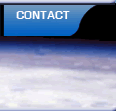 |
 |
 |
 |
 |
 |
|
| 2005 April — Vol. XIV, No. 2 | ||||||
....
|
EOM April 2005 > FEATURES New USGS Landsat ProductsSam S. Jackson and Scott G. Bourne Back in May 2003, Landsat 7 developed a technological hiccup with its Scan Line Corrector (SLC). That instrument's job is to compensate for the forward motion of the satellite as its sensor captures data. After several attempts to fix it, scientists determined that the SLC could not be repaired. All data collected since July 2003 (excluding a 2-week interval from 9/3/03 to 9/17/03) have been captured with SLC "off." The result of the failed SLC is Enhanced Thematic Mapper Plus (ETM+) images that have strips of data duplicated and/or missing from the image. The good news is that one part of the scene, the center, is essentially unaffected. The other good news: only about 22 percent of each image is actually lost to the SLC anomaly. USGS, which runs Landsat on behalf of NASA, has been working for the last several months to provide imagery that will continue to be of maximum value to researchers and others who depend on the data. Last year, USGS introduced three separate product options from the SLC-off data to the market, reflecting three different methods by which the missing data are being handled. Standard two-pixel interpolation. The uncorrected SLC-off data, Level 0Rp, is "just what the sensor saw" and includes the original duplicated data (Figure 1). Level 1G Standard assigns null values (black) to the areas of duplication, after first applying a small 2 pixel interpolation into the missing data areas (Figure 2). Gap-filled. Level 1G Gap-filled is just what the name suggests: the data gaps are filled with data from an SLC on scene and/or a series of SLC off scenes over the same geography (Figure 3). In early gap-filled images, the image requestor selected a single SLC-off image to "fill the gaps." In December 2004, a new choice to select SLC-off images for the "gap- filling" was added. Image requestors now can select several images for the gap filling. That brings the data far closer to an up-to-date image than perhaps any other methodology. Still, it does mean that the requestor of the image needs to research and select the images to use, just as is done with a single SLC-on image. |
|||||||||||
|
|
|||||||||||
|
ęCopyright 2005-2021 by GITC America, Inc. Articles cannot be reproduced, |
||||||||||||





